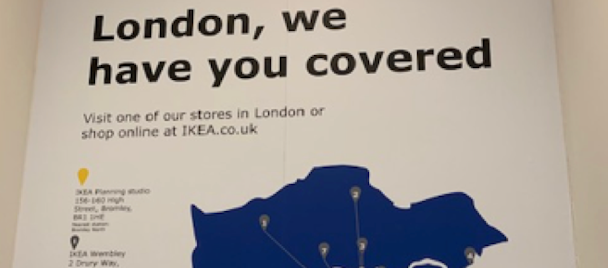Five things brands can learn from the rise of micro retailing
Although there was a lot of hype surrounding Microsoft’s giant new London flagship earlier this month, this year’s most interesting retail news is the fact that all brands are downsizing.

This is the year that B&Q launched its small-format, urban concept GoodHomes; Ikea has opened its second and third Planning Studios in London and New York respectively; Target is opening 30 smaller format stores in city locations (in addition to its existing 87); and Kohl’s is downsizing ten of its stores.
For all of these brands, transitioning into micro retail is about becoming more agile and cost-effective. For big box retailers like Ikea and B&Q, it’s also about reaching new customers; the UN predicts that by 2050, two out of three people will live in cities or urban areas.
As consumer habits change rapidly, more retailers will have to downsize to keep up. There are a few lessons they can learn from brands already doing it.
1. Cater to the market
Target is a great example of catering its smaller stores to a specific market. Its smaller Manhattan store in Herald Square sells products tailored to tourists, like luggage and NYC-branded merchandise, while its stores near college campuses sell ‘dorm room’ essentials.
Before launching its new Planning Studio in Bromley, Ikea went on home visits in the local area; the insight that open-plan living is popular locally is reflected in the showrooms.
As more brands move into micro retailing, they’d do well to remember that the aim of downsizing isn’t to give customers less choice – it’s about giving them a more targeted choice.

2. Do something new
In Ikea’s new Manhattan Planning Studio, customers can’t buy cushions or eat meatballs. Instead, they can walk through showrooms based on real New York homes, including a 333-square-foot studio with a bathtub in the living room. After browsing the showrooms, customers can chat to a designer, or they can sit in a private booth and plan their new home by themselves, according to Business Insider.
It’s not the typical Ikea shopping experience but it still feels on-brand, and it’s more relevant to inner city New Yorkers. When downsizing, it’s important that brands give the new concept a unique purpose – and it can’t be ‘our bigger stores are losing money’.
3. Invest in customer experience
As smaller stores are cheaper to set up and run, more money can be spent on innovation. Sephora has been leading the way since 2017, when it opened its first small-format Studio store. In its Studios, customers can book treatments and experiment with virtual make-up looks, and staff can use an app to check customers’ preferences and past purchases (Retail Dive).
When you’re downsizing, investing in customer experience can be a necessity too. In B&Q’s smaller GoodHome store in Sutton, there isn’t room to stock everything on the shop floor. So B&Q keeps stock out of sight, and customers select items on in-store digital screens and through a click and collect app.
4. Work with partners
Earlier this year, Kohl’s announced it would be closing four of its mall stores and opening four urban stores, which will be 60% smaller and carry 60% less stock. Why? It’s all part of the retailer’s ‘rightsizing’ strategy.
‘By rightsizing stores based on customer and inventory needs, Kohl’s stores are able to operate more efficiently and provide a more engaging customer experience,’ says Kohl’s.‘ It’s an important initiative to leverage Kohl’s real estate assets and drive traffic to stores through key partnerships.’
By the end of 2019, Kohl’s will make ten of its existing stores smaller and lease out the extra space to Planet Fitness; it has already done this with Aldi at a store in Wisconsin.
5. Be part of the community
One advantage of going small and local is that you can become part of the community. When Ikea opened its new Planning Studio in Bromley back in March, it created a community room for locals to ‘take full advantage of’. Although, when one of our team here at Whippet paid a visit recently, it seemed as if the area was closed.
Hopefully working with the community is still on Ikea’s radar (an a-board promises a new ‘inspiration space coming soon’), because downsizing is a chance for brands to have a more intimate relationship with customers, giving them a compelling reason to keep visiting their local store.

Small but mighty
Micro stores have the potential to reach a new market and give new life to a brand, plus they provide a level of protection against smaller, more nimble competition. The examples above show that when they’re relevant and have a unique purpose, micro stores will succeed.
Carla Heath, managing director at Whippet.
Content by The Drum Network member:

Whippet
We’re creatives, designers, writers, thinkers, movers and shakers, musers and makers. Down-to-earth, brand-obsessed, with a passion for retail and a dedication...
Find out more
